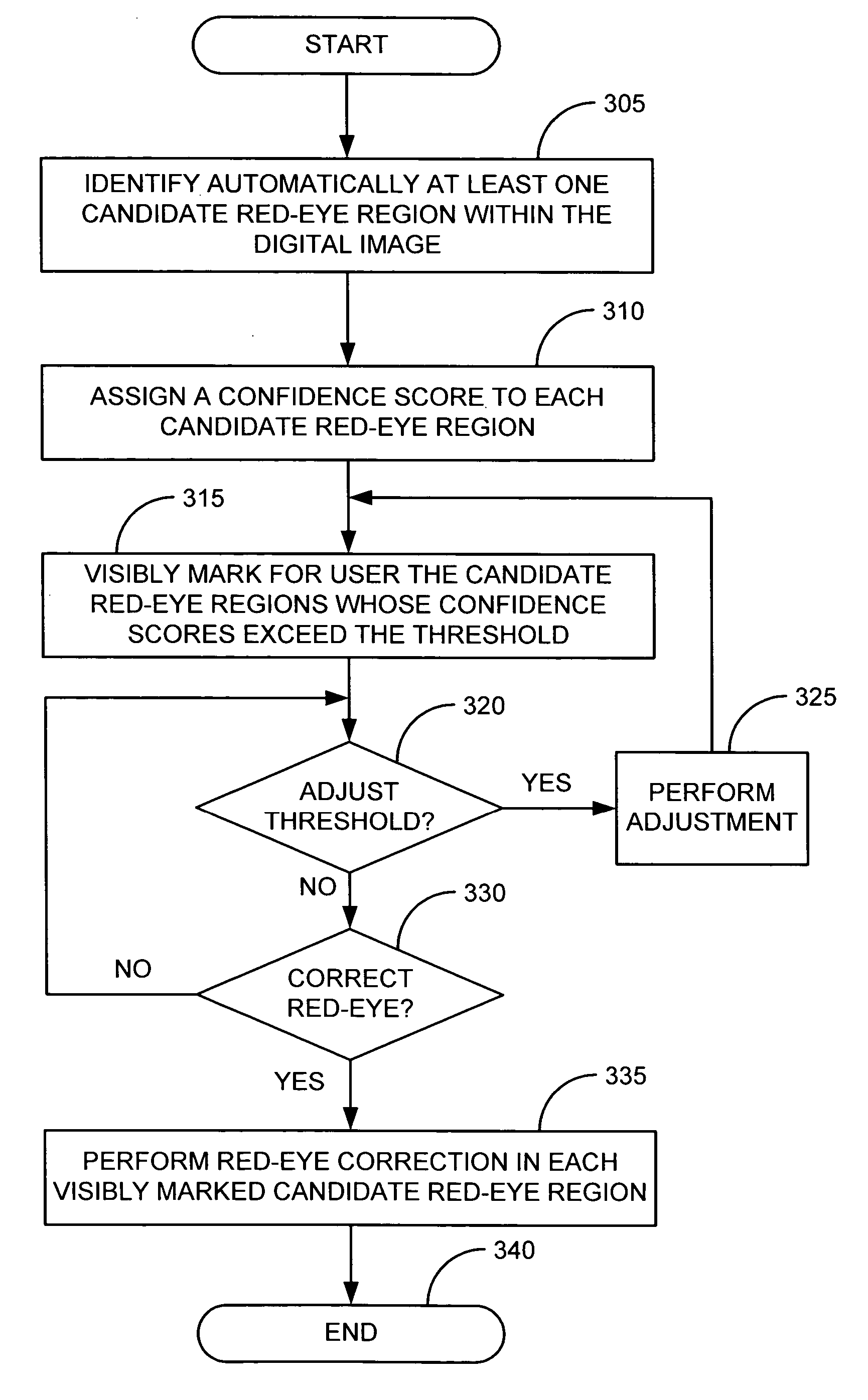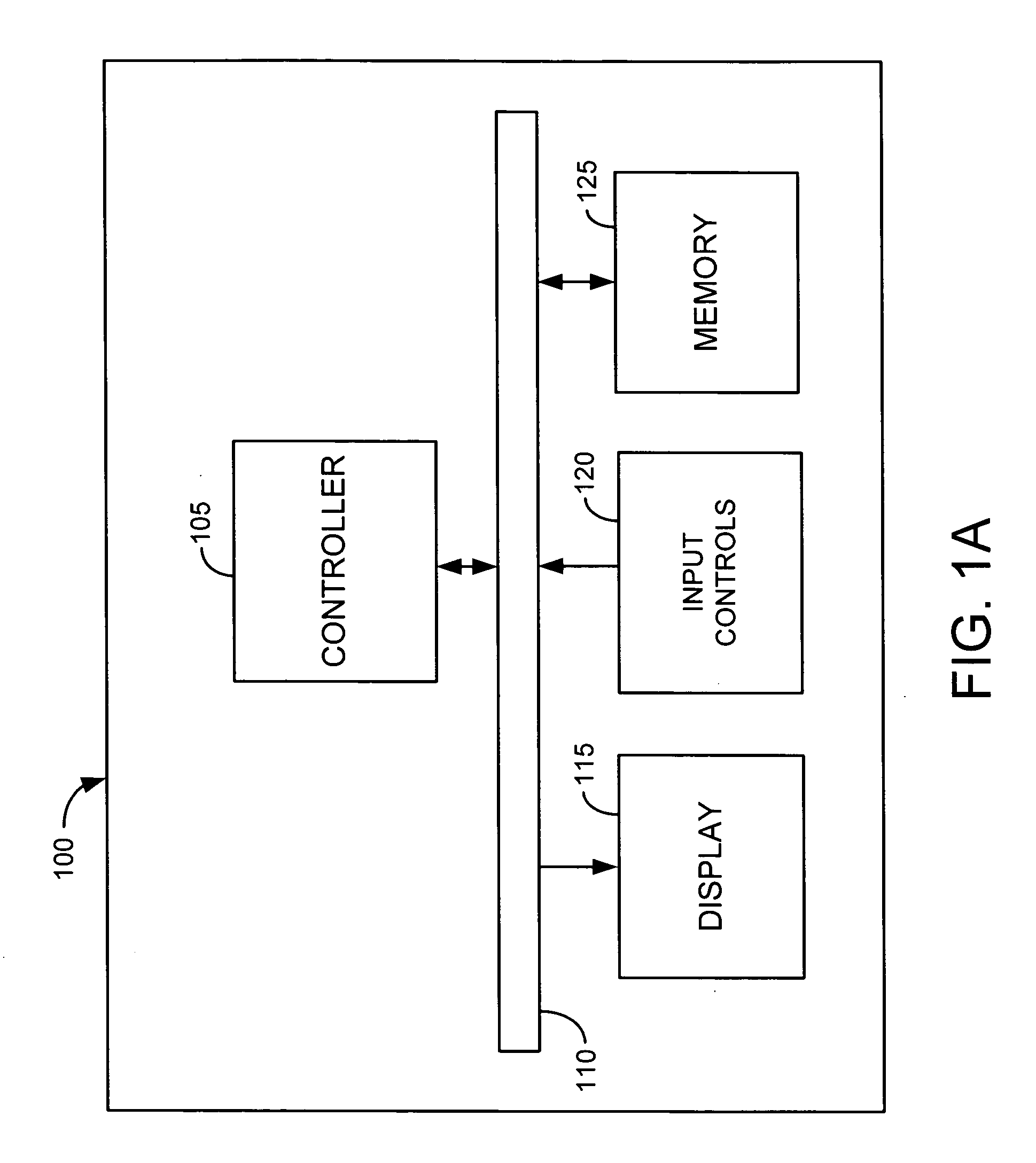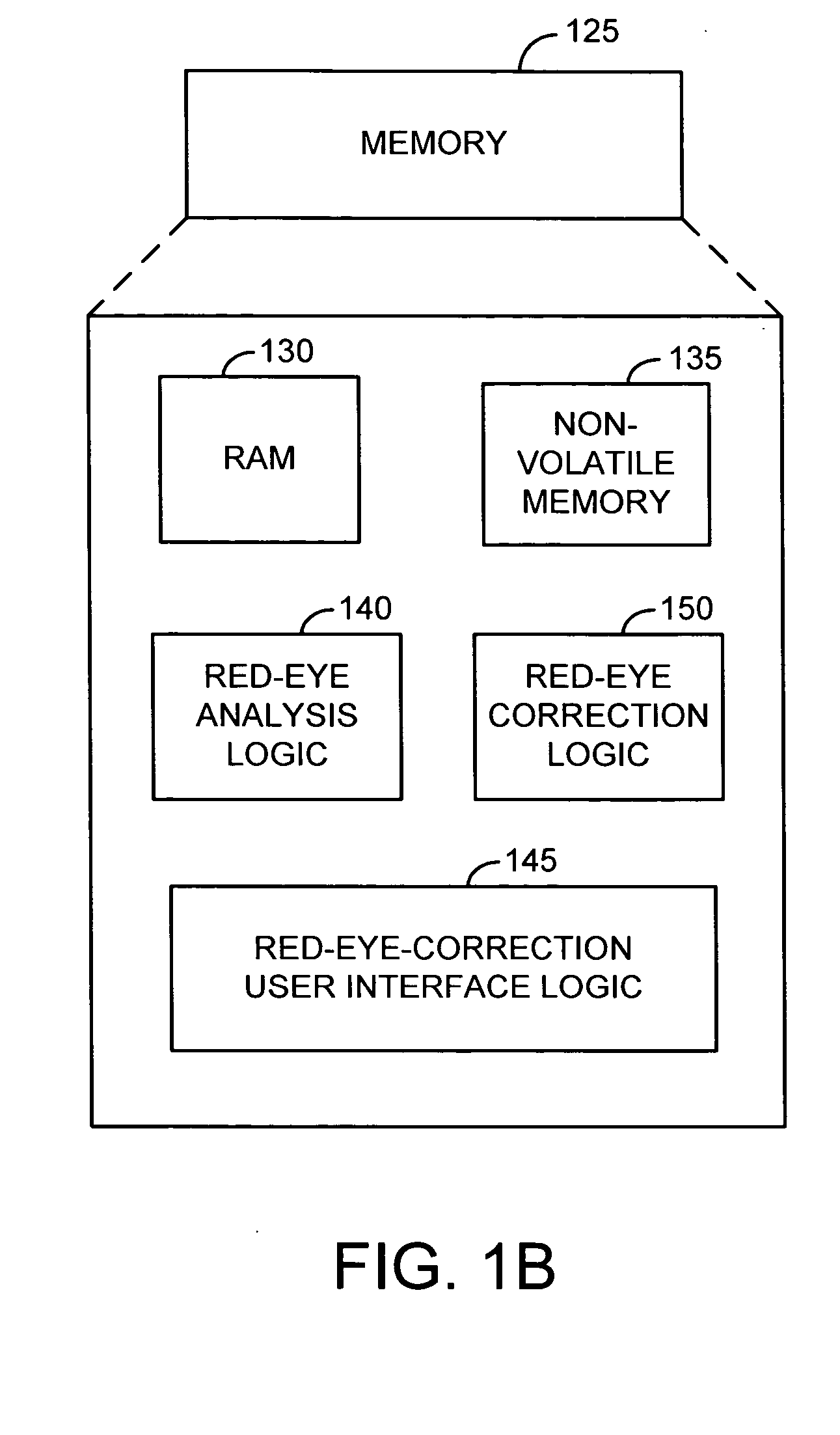Red-eye correction method and apparatus with user-adjustable threshold
a technology of red eye and threshold, applied in the field of digital photography, can solve the problems of false positives, red eyes, and false positives, and achieve the effect of correcting erroneously and red eyes
- Summary
- Abstract
- Description
- Claims
- Application Information
AI Technical Summary
Problems solved by technology
Method used
Image
Examples
Embodiment Construction
[0014] Red-eye correction may be improved by allowing a user to adjust the threshold dynamically. After the digital image has been analyzed to identify candidate red-eye regions, the digital image may be presented to the user, and the candidate red-eye regions whose figures of merit exceed a predetermined initial threshold may be visibly marked within the digital image. As the user adjusts the threshold dynamically, more or fewer candidate red-eye regions may be visibly marked in accordance with the adjusted threshold.
[0015] One advantage of this approach is that the predetermined initial threshold may be set less sensitively at the outset to eliminate more false positives (candidate red-eye regions that do not contain a genuine “red eye”). If the algorithm misses genuine “red eyes,” the user may easily compensate by adjusting the threshold to increase the sensitivity. In some cases (i.e., where all false positives have less favorable figures of merit than all of the genuine “red e...
PUM
 Login to View More
Login to View More Abstract
Description
Claims
Application Information
 Login to View More
Login to View More - R&D
- Intellectual Property
- Life Sciences
- Materials
- Tech Scout
- Unparalleled Data Quality
- Higher Quality Content
- 60% Fewer Hallucinations
Browse by: Latest US Patents, China's latest patents, Technical Efficacy Thesaurus, Application Domain, Technology Topic, Popular Technical Reports.
© 2025 PatSnap. All rights reserved.Legal|Privacy policy|Modern Slavery Act Transparency Statement|Sitemap|About US| Contact US: help@patsnap.com



